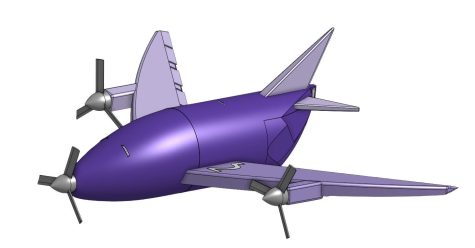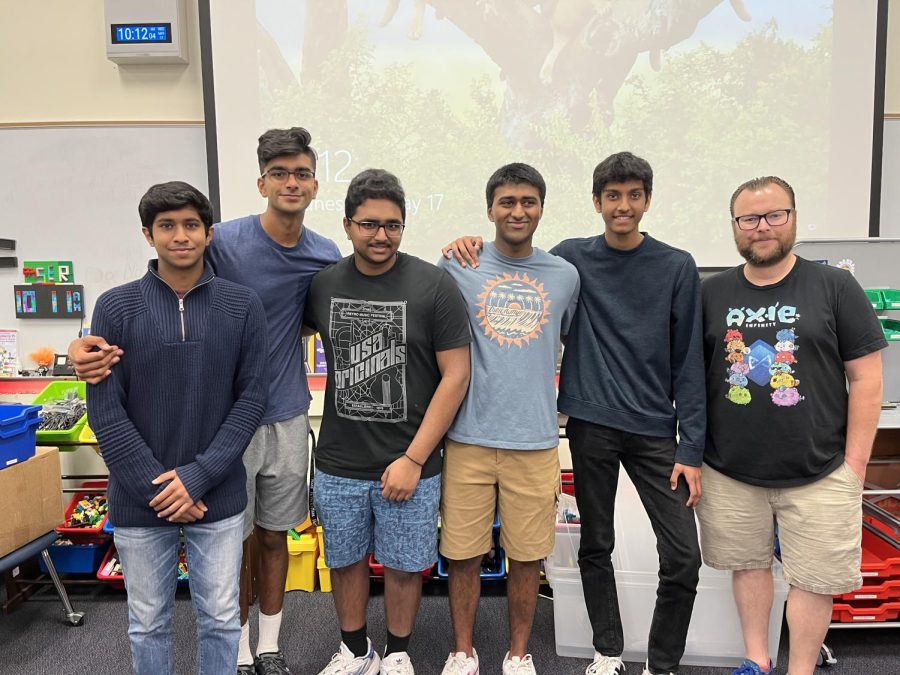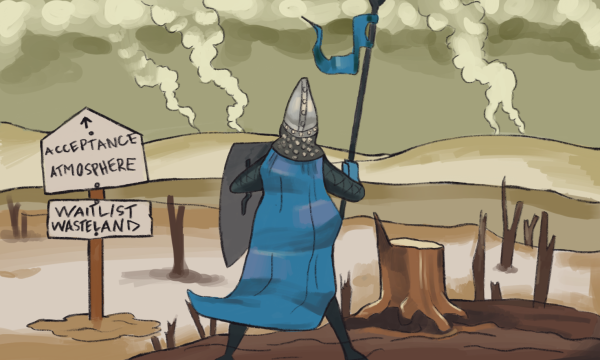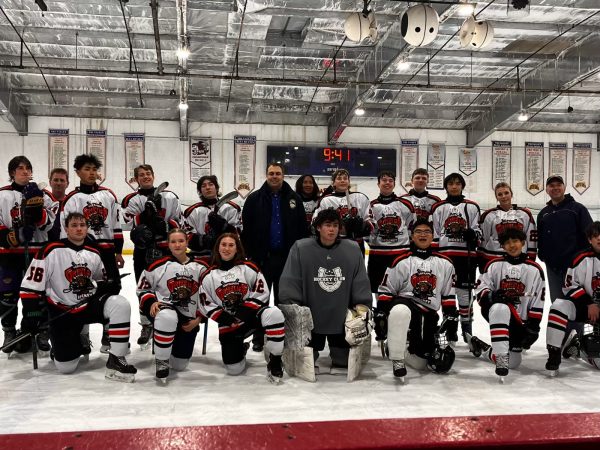Students’ design flies high
CALtronics team placed 3rd in national RWDC competition
From left to right, the CALtronics team of Sushant Mireddy, Abhay Rathi, Srinikesh Kanneluru, Aaditya Sanil, and Swayam Shah pose with adviser, Sean Raser. The team designed an autonomous freight aircraft called G-59 Zeta.
Team CALtronics, made up of Cal High students and teachers, placed third in the national Real World Design Challenge (RWDC) competition in only their first year of competing.
RWDC is an annual virtual competition that prompts high school students to identify a real-world challenge and create a solution to solve it.
Students must account for costs, create a prototype, create an engineering notebook, and create a presentation that will be presented to judges.
“This was mostly all student-driven,” said AP Computer Science Principles teacher Sean Raser, who mentors the team. “They did an amazing job.”
The CALtronics five-member team of Srinikesh Kanneluru, Abhay Rathi, Swayam Shah, Aaditya Sanil, and Sushant Mireddy investigated the problem of freight vehicles causing pollution.
Freight vehicles are trucks and aircrafts that transport packages and goods to homes and companies. Team CALtronics members said these freight vehicles caused about 50 percent of greenhouse gas emissions in 2015.
Team CALtronics came up with an innovative solution, G-59 Zeta, to their problem. G-59 Zeta is an autonomous-driving aircraft that reduces the risk of human error and loss. Students designed the aircraft specifically so the carrier is lightweight, nimble, fuel-efficient, strong and fast.
The five members worked hard during the season, working in Raser’s class during lunch and having online meetings often.
“They’d have meetings on Discord,” Raser said. “It was usually numerous times per week.”
Through all the hard work, students also gained valuable experience and had fun on the journey.
“Meetings were very enjoyable,” Mireddy, CALtronics’ lead writer and researcher, said.
Students said they gained and improved their interests for careers in STEAM (science, technology, engineering, art, and math) through RWDC.
“Our interests definitely grew,” Shah, who is CALtronics’ lead CAD Designer, said. “We plan on doing it again, maybe.”
Students designed and reviewed all specs with their seven-step engineering design process, including asking, researching, imagining, planning, creating, testing, and improving. The team then created a 76-slide presentation to present their idea to the judges. This slideshow presented the problem, and then explained the design, technology and cost.
Additionally, they explained regulations and the plan for future expansion for G-59 Zeta. They also created original Computer-aided Design (CAD) drawings of their design. The design’s detail is one of the main reasons why they placed third nationally.
“The attention to detail was necessary because the judges are experienced and they’re used to seeing professional documentation,” Kanneluru said.
CALtronics specified the exact control systems that are best suited for G-59 Zeta. They did deep research with their engineering process and explained why the advanced computer systems they chose, Crysalis Command Control System (CCS), Piccolo Elite, and Garmin G3X GPS System, would work perfectly for their aircraft.
In the slides, they explained how these three computer systems functioned together.
CCS allows for manual control of the aircraft from a computer screen at ground level. It’s often used by military personnel because of its durability and long lasting life, according to Trenton Systems, a US defense computing company.
The Piccolo Elite computer system would allow the G-59 Zeta to be a self-driving vehicle and fully autonomous in air, while the Garmin G3X GPS System would be used to communicate with other aircrafts since it’s an advanced system that helps control air traffic and prevent accidents.
Out of a large market of aircraft parts, they were able to pinpoint the best pieces to make an almost picture-perfect aircraft and present it in a professional manner.
“The main reason of why we succeeded was definitely teamwork,” Shah said. “We collaborated very well to get the project done.”

Andrew Chen is a Junior at Cal High and has been doing Newspaper for three years. He enjoys writing about current events and sports relevant to Cal. He’s...

Senior, Anvi Kataria is both Opinion and Podcast Editor for this school year. This is her third year on the Californian staff and is looking forward to...









